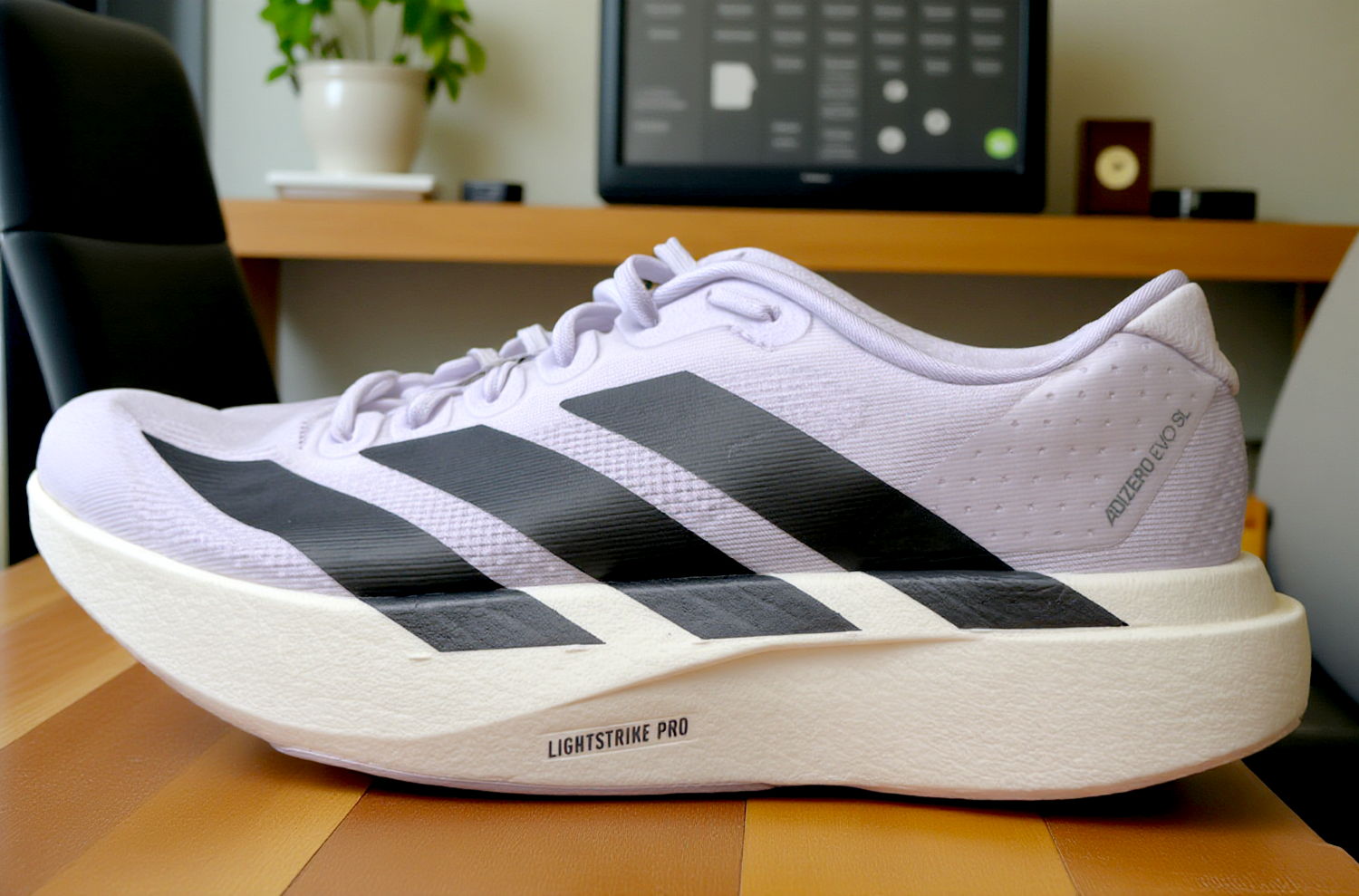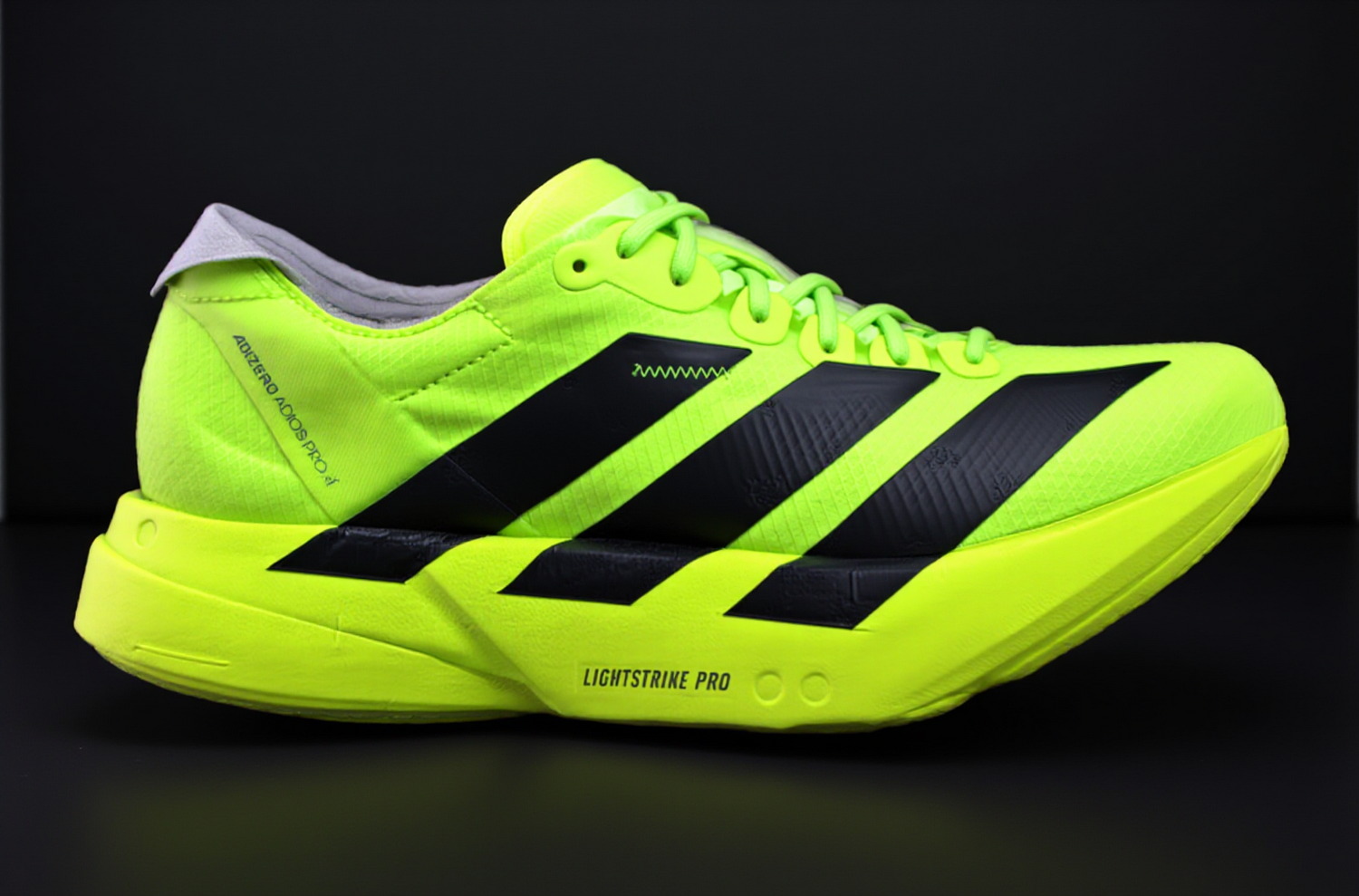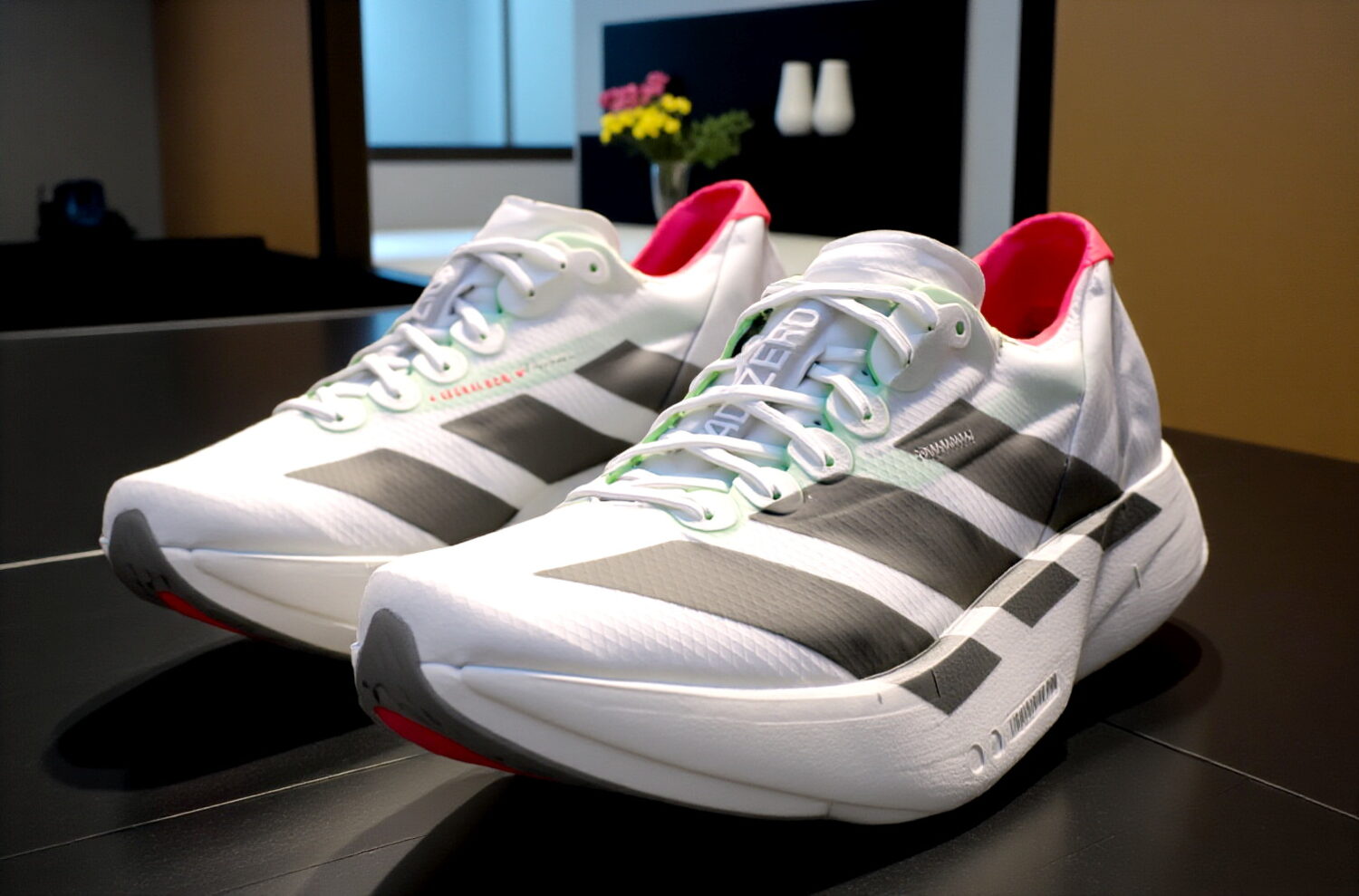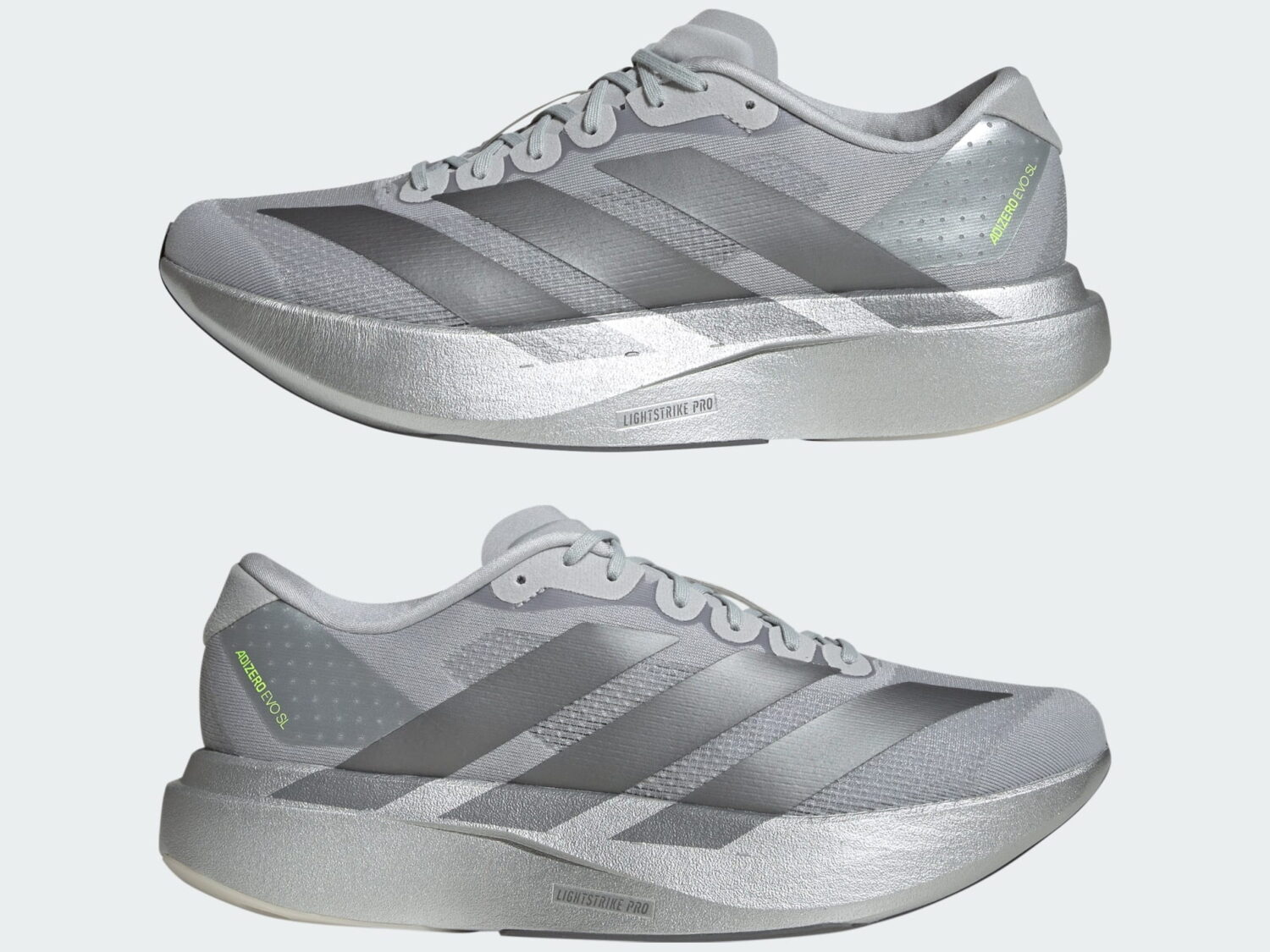The Adidas Adizero Evo SL: A Deep Dive into the Ultimate Lightweight Daily Trainer for 2025

The running shoe market is buzzing with excitement, and at the heart of it lies the Adidas Adizero Evo SL—a lightweight, versatile daily trainer that promises premium performance at an accessible price. Inspired by the record-breaking Pro Evo 1 racing shoe, the Evo SL brings high-end technology to everyday runners without breaking the bank. Priced at £130 ($150), this shoe blends a snappy Lightstrike Pro midsole, a breathable upper, and a rocker geometry designed for speed and comfort. Whether you’re logging easy miles, crushing tempo runs, or seeking a budget-friendly all-rounder, the Evo SL aims to deliver. In this comprehensive review, we’ll explore its design, performance, fit, and value, comparing it to competitors and dissecting its place in your running rotation as of February 21, 2025.
🏃♂️ Design and Technology: A Closer Look at the Evo SL’s Blueprint
The Adidas Adizero Evo SL bridges the gap between elite racing shoes and daily trainers, borrowing design cues from the Pro Evo 1 and Adios Pro series while tailoring them for versatility. Let’s break down its key components.
🛠️ Upper: Lightweight Comfort Meets Breathability
The upper of the Evo SL features a synthetic textile engineered mesh—a minimalist yet effective design. It’s exceptionally breathable, earning a near-perfect score for ventilation, which makes it ideal for warm climates but potentially chilly in colder conditions without thick socks. The mesh is reinforced with Adidas’ iconic three stripes, extending from the eyelets to the midsole, adding subtle structure without excess weight.
- Heel and Collar: A sturdy internal heel counter locks the foot in place, minimizing slip during runs. Padding around the ankle collar is moderate—enough for comfort without compromising the shoe’s lightweight ethos.
- Tongue and Laces: The tongue is thin and race-inspired, lacking a gusset, which can lead to minor shifting if not seated properly. While functional, the flimsy laces feel underwhelming for a premium shoe, often requiring extra effort for a secure lockdown.
- Fit: Unlike some narrower Adizero models (e.g., Boston 12), the Evo SL offers a roomier midfoot and toe box. Most testers found it true-to-size, though some recommend sizing up half a step for wider feet or a more relaxed fit.
At 224g (7.9 oz) in a US men’s size 9 , the upper keeps weight low while maintaining daily trainer comfort—a rarity in this price bracket.
🧪 Midsole: Lightstrike Pro Unleashed
The star of the Evo SL is its full-length Lightstrike Pro midsole, a TPE-based foam known for its resilience and energy return. This iteration mirrors the formulation found in the Adios Pro 3—slightly firmer than the softer blends in newer racing shoes like the Adios Pro 4. With a stack height of 39mm at the heel and 33mm at the forefoot (6mm drop), it delivers a cushioned yet responsive ride.
- Rocker Geometry: A sharp forefoot rocker, positioned at 60% from the heel, enhances turnover and encourages a forward-leaning stride. While less aggressive than its racing siblings, it still adds a lively snap to each step.
- No Plate, No Problem: Unlike carbon-plated super shoes, the Evo SL relies on foam alone (save for a small nylon shank for torsional stability). This keeps it agile and flexible, though it sacrifices some propulsion compared to plated alternatives.
- Weight Adjustment: In US 9, the midsole contributes to a featherlight 224g (7.9 oz), making it competitive with shoes like the New Balance Rebel V4.
This midsole strikes a balance between softness for easy runs and firmness for speed, positioning the Evo SL as a standout non-plated trainer.
👟 Outsole: Grip and Durability in Focus
The outsole combines Continental rubber on the forefoot with Adidas’ clear rubber at the heel. It’s smooth and minimal, prioritizing weight savings over deep lugs, yet testers report solid traction on wet and dry pavement.
- Wear Patterns: After 80–100 km (50–62 miles), the rubber shows minimal wear, though exposed Lightstrike Pro sections may discolor or erode slightly with heavy use.
- Limitations: The thin rubber lacks the aggressive grip of shoes like the Boston 12, making it less ideal for rugged trails or icy conditions.
For a lightweight trainer, the outsole performs admirably, balancing durability and performance for road runners.
🌟 Performance: How the Evo SL Shines on the Run
The Evo SL’s versatility is its calling card. From easy jogs to speed sessions, it adapts to a range of paces and distances. Here’s how it fares across different scenarios, based on extensive testing up to February 2025.
🏃 Easy Runs: Comfort Meets Efficiency
For runs at 5:30–6:00 min/km (8:50–9:40 min/mile), the Evo SL offers a plush yet efficient ride. The Lightstrike Pro foam softens over the first 20–30 km (12–19 miles), delivering a bouncy, forgiving feel. The rocker geometry ensures smooth transitions, though some runners note a slight urge to pick up the pace due to its forward tilt.
- Distance Suitability: Up to 12–13 km (7.5–8 miles) or an hour feels effortless. Beyond 90 minutes, neutral runners with tired legs may prefer a more stable shoe like the ASICS Superblast.
⚡ Tempo and Progression Runs: Speed Unlocked
At 3:40–4:00 min/km (5:55–6:25 min/mile), the Evo SL comes alive. Its lightweight build and responsive foam make acceleration intuitive, while the rocker aids quick turnover. Testers praised its performance in progression runs, moving seamlessly from easy to steady paces over 60 minutes.
- Comparison: It lacks the snap of carbon-plated shoes (e.g., Hoka Mach X2), but for a non-plated trainer, it’s impressively nimble.
🏁 Speed Work: Track and Intervals
On the track, the Evo SL handles 400m reps at 75 seconds with 100m jog recoveries (40–45 seconds) admirably. One tester compared it to the plated Metaspeed Edge Paris, noting less propulsion but comparable agility due to its 224g (7.9 oz) weight. For intervals up to 2400m, it’s a reliable workhorse.
- Stability Note: The soft midsole and narrow platform can feel slightly unstable on tight turns or fatigued legs, a trade-off for its lightness.
🛤️ Long Runs: Pushing the Limits
While capable of marathon distances (42.2 km/26.2 miles), the Evo SL isn’t optimized for ultra-long efforts. Its cushioning holds up to 21.1 km (13.1 miles) comfortably, but beyond that, runners seeking max stability might opt for the Boston 12 or Superblast.
📏 Fit and Sizing: Finding Your Perfect Pair
Fit varies by foot shape, but the Evo SL leans toward accessibility compared to narrower Adizero models.
- True-to-Size: A US 9 weighs 218g (7.7 oz) . Most testers found their regular size comfortable, with ample midfoot and toe box room.
- Sizing Up: Runners with wider feet or those preferring extra space suggest a half-size increase.
- Lockdown: The thin tongue and lightweight laces require snug tying to prevent slippage, especially during fast efforts.
⚖️ Comparisons: How the Evo SL Stacks Up
To contextualize its value, let’s compare the Evo SL to key competitors in US men’s size 9, with weights adjusted where necessary.
| Shoe | Price | Weight | Stack (Heel/Forefoot) | Drop | Midsole | Best For |
|---|---|---|---|---|---|---|
| Adidas Adizero Evo SL | $150 | 218g (7.7 oz) | 39mm/33mm | 6mm | Lightstrike Pro | Versatile daily training |
| New Balance Rebel V4 | $140 | 212g (7.5 oz) | 30mm/24mm | 6mm | FuelCell | Stable long runs, tempo |
| Brooks Hyperion 2 | $140 | 215g (7.6 oz) | 30mm/22mm | 8mm | DNA Flash | Lightweight speed |
| Hoka Mach 6 | $140 | 232g (8.2 oz) | 37mm/32mm | 5mm | PROFLY+ | Cushioned daily runs |
| Topo Specter 2 | $165 | 252g (8.9 oz) | 37mm/32mm | 5mm | PEBAX | Premium all-rounder |
| Adidas SL2 | $130 | 238g (8.4 oz) | 35mm/27mm | 8mm | Lightstrike/EVA | Durable workhorse |
| Adidas Boston 12 | $160 | 275g (9.7 oz) | 39mm/32mm | 7mm | Lightstrike Pro/Rods | Long runs, tempo |
| ASICS Superblast 2 | $200 | 245g (8.6 oz) | 45mm/37mm | 8mm | FF Blast+ Turbo | Max cushion, stability |
- Vs. Rebel V4: The Evo SL’s bouncier foam outshines the Rebel’s FuelCell for speed, though the Rebel offers a wider, more stable base.
- Vs. Boston 12: The Evo SL sacrifices energy rods for a lighter, comfier ride, making it a better daily option.
- Vs. Superblast 2: At $50 less, the Evo SL delivers similar versatility with less cushioning but greater agility.
💰 Value Proposition: Premium Tech at a Bargain
At £130 ($150), the Evo SL undercuts many peers while offering Lightstrike Pro—a foam typically reserved for $200+ super shoes. Its durability (holding strong past 100 km/62 miles) and versatility make it a rotation standout, rivaling pricier options like the Topo Specter 2 or Superblast 2.
- Pros: Elite foam, lightweight design, versatile performance, unbeatable price-to-tech ratio.
- Cons: Thin laces, non-gusseted tongue, moderate stability for long runs.
🏅 Who Should Buy the Adidas Adizero Evo SL?
This shoe caters to:
- Runners seeking a lightweight daily trainer for mixed paces (5–21 km/3–13 miles).
- Budget-conscious enthusiasts wanting premium foam without a $200+ price tag.
- Neutral runners comfortable with a softer, rocker-driven ride.
It’s less ideal for:
- Stability seekers needing max support for long runs.
- Racers prioritizing plated propulsion for PR attempts.
🌐 Final Verdict: A Game-Changer in 2025?
The Adidas Adizero Evo SL redefines what a $150 running shoe can achieve. Its Lightstrike Pro midsole, airy upper, and rocker geometry deliver a fun, fast, and forgiving ride that punches above its weight. While not a marathon racer or stability champ, it excels as a daily trainer for speed sessions, progression runs, and casual miles. As of February 21, 2025, it’s a must-consider addition to any rotation—proof that premium performance doesn’t require a premium price.



